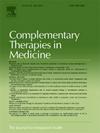Hot spring and sauna use for improving blood lipid profiles: A systematic review and expert consensus on efficacy and recommendations
IF 3.5
3区 医学
Q1 INTEGRATIVE & COMPLEMENTARY MEDICINE
引用次数: 0
Abstract
Objectives
Dyslipidemia is a significant risk factor for cardiovascular disease. Traditional treatments often focus on pharmacological interventions; however, alternative therapies, such as hot spring and sauna use, have recently gained attention because of their potentially beneficial effects on lipid profiles and cardiovascular health.
Design and setting
This systematic review aimed to synthesize current evidence on the efficacy of hot spring and sauna use, alone or combined with exercise therapy, in improving blood lipid profiles, with a focus on mechanisms, benefits, and limitations.
Methods
The review followed the Preferred Reporting Items for Systematic Reviews and Meta-Analyses guidelines. A search of 330 records across major databases identified 127 studies for blinded screening using Rayyan (a web-based application for conducting systematic reviews). Seven randomized controlled trials (RCTs) investigating the effects of hot spring and sauna use on lipid profiles in adults were included.
Results
Four RCTs in younger adults (mean age < 60 years) demonstrated that hot spring and sauna use resulted in reductions in serum total cholesterol and low-density lipoprotein cholesterol; these therapies were given a weak expert recommendation. Three RCTs in older adults (mean age ≥ 60 years) showed no significant blood lipid changes.
Conclusions
In younger adults, hot spring and sauna use, particularly when combined with exercise therapy, may contribute to improved lipid profiles. Emerging evidence from intervention studies could inform future guidelines for integrating these therapies into dyslipidemia management strategies.
温泉和桑拿用于改善血脂谱:对功效和建议的系统评价和专家共识
目的:血脂异常是心血管疾病的重要危险因素。传统的治疗方法往往侧重于药物干预;然而,替代疗法,如温泉和桑拿的使用,最近引起了人们的关注,因为它们对血脂和心血管健康有潜在的有益影响。设计和背景本系统综述旨在综合目前有关温泉和桑拿单独使用或与运动疗法联合使用对改善血脂状况的有效性的证据,重点关注其机制、益处和局限性。方法本综述遵循系统评价和荟萃分析指南的首选报告项目。对主要数据库中的330项记录进行的搜索确定了127项使用Rayyan(用于进行系统评价的基于网络的应用程序)进行盲法筛选的研究。纳入了七项随机对照试验(rct),研究了温泉和桑拿对成人脂质谱的影响。结果4项针对年轻成人(平均年龄60岁)的随机对照试验表明,使用温泉和桑拿可降低血清总胆固醇和低密度脂蛋白胆固醇;这些疗法都没有得到专家的有力推荐。在老年人(平均年龄≥60岁)中,3项随机对照试验未发现明显的血脂变化。结论:在年轻人中,使用温泉和桑拿,特别是结合运动疗法,可能有助于改善血脂。来自干预研究的新证据可以为将这些疗法整合到血脂异常管理策略的未来指南提供信息。
本文章由计算机程序翻译,如有差异,请以英文原文为准。
求助全文
约1分钟内获得全文
求助全文
来源期刊

Complementary therapies in medicine
医学-全科医学与补充医学
CiteScore
8.60
自引率
2.80%
发文量
101
审稿时长
112 days
期刊介绍:
Complementary Therapies in Medicine is an international, peer-reviewed journal that has considerable appeal to anyone who seeks objective and critical information on complementary therapies or who wishes to deepen their understanding of these approaches. It will be of particular interest to healthcare practitioners including family practitioners, complementary therapists, nurses, and physiotherapists; to academics including social scientists and CAM researchers; to healthcare managers; and to patients. Complementary Therapies in Medicine aims to publish valid, relevant and rigorous research and serious discussion articles with the main purpose of improving healthcare.
 求助内容:
求助内容: 应助结果提醒方式:
应助结果提醒方式:


